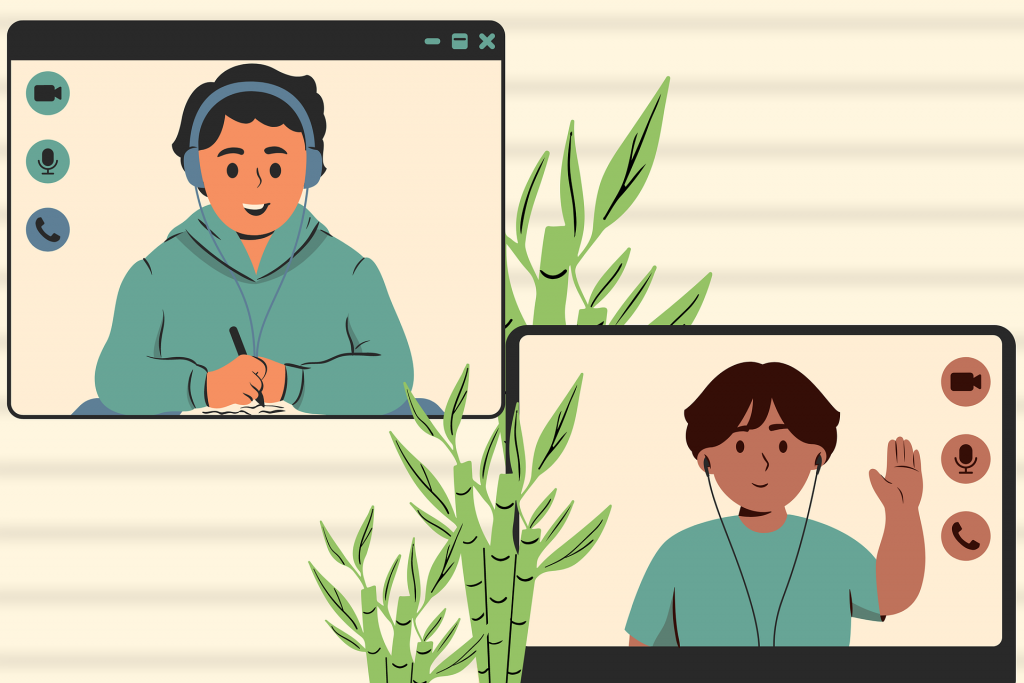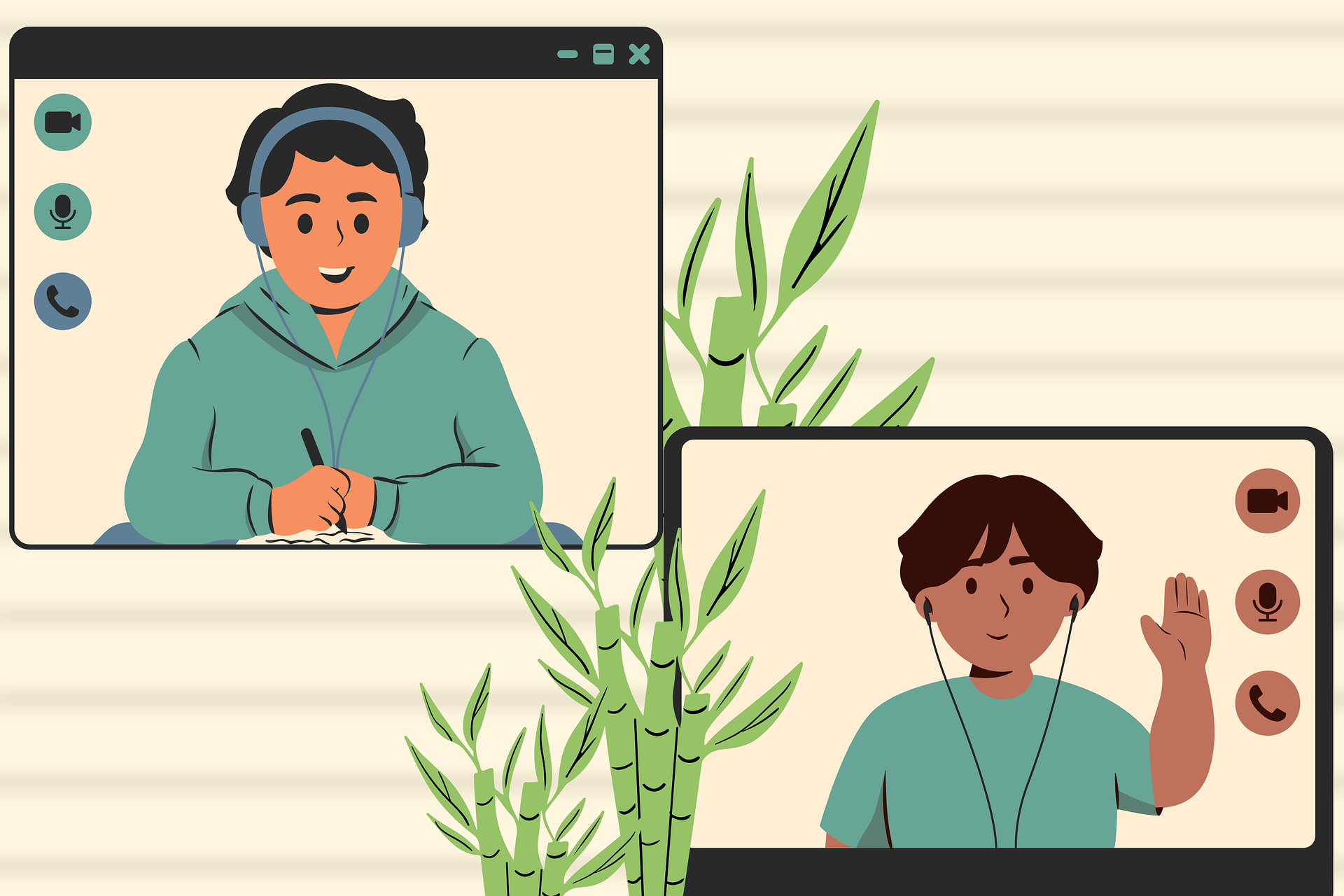After many parents have tried on some kind of teaching duties for a few months, families dread the release of the “second series” of quarantine-like fires.
Well, that scenario is likely. At the same time, education experts argue about whether “distance learning” will teach the world to master technology and save energy and time, or rob children of valuable face-to-face interaction with teachers.
Here are the six main advantages and disadvantages of a learning format that will stay with us for a long time.

ADVANTAGES OF “DISTANCE LEARNING
1. A unique opportunity to adjust the pace of learning for oneself
More often at home, an anticipatory and relaxed atmosphere prevails. The student develops their rhythm and follows it without additional worries about whether or not they will manage to do something. Some are given more time to solve maths equations, others are more likely to write English problems and get extra time for in-depth study of another topic or physical activity. There is an opportunity to feel how cool it is when it’s not the school bell and the break between classes that form the rhythm, but you. What is more, WritingAPaper can help you to prepare your essays instead of you. In such a way, you will have some free time, which can be spent on other subjects. To assure you, that our service is the best you can read about our advantages.
2. You can identify and work on a child’s weaknesses during learning
Methodologically strong online lessons, students work on special learning platforms transparently show the picture of which subjects a child is brilliant at and where gaps exist. This can come as a surprise to parents who have previously voiced their dissatisfaction with the school as a whole or to teachers about their child’s lack of success in a particular area of knowledge.
Parents can also observe their child and find out how attentive he or she is during lessons. Or, if the child is forgetful and can’t focus for a long time, which can negatively affect the final result. Problem areas should not only be identified but also dealt with immediately. Face-to-face teaching does not allow such hidden problems to be identified: the teacher often cannot see them because of the large number of trainees.
3. Learning comes from repetition.
When something is unclear, at school children are often embarrassed to ask the teacher to explain the material again. Online, this is not a problem: the child can listen to the lesson or part of it as many times as he or she needs to consolidate knowledge. Tests, which can be repeated several times, are great for reinforcing what they’ve learned. And students can return to the material presented in an online format at any time to refresh their memory of specific dates, facts, and rules. It is especially convenient if these materials are in the form of slides, presentations, or audio format when it is possible to return at any second of the lecture.
4. Reduces mental and physical strain.
Parents of “owl” schoolchildren will support this point: It is not necessary to persuade their child to get out of bed as fast as possible. They get an opportunity to wake up at 8 am and go to school cheerful, without the chronic black eyes. To save your sleep, you can read about the best writing services. We know how to help you with your homework!
DISADVANTAGES OF DISTANCE LEARNING
1. Lack of socialization and belonging to a community.
Much of what we learn from childhood happens through peer-to-peer learning. Growing up and feeling a sense of belonging to a social group is an essential part of becoming a teenager. Online, it is as if they are deprived of it.
Children learn teamwork, conflict resolution, and good interpersonal interactions in everyday life. In a distance learning environment, they don’t have many opportunities to gain soft skills, at the top of the 21st-century skills list.
2. Life as a gadget
Usually classes in school last from 8 to 14 and after that there are extracurricular activities and sports sections. Students have to sit in front of computers all day and this harms their eyesight. Even taking into account the breaks for exercise and rest. Ophthalmologists generally advise not to leave children in front of screens for more than two hours a day. Plus, after school, children immediately switch to entertainment content on gadgets – it’s already an ingrained habit for many. Therefore, the time spent on gadgets almost doubles.
Given these realities, doctors are sounding the alarm and stressing that a child’s unformed skeleton is not built to sit still for long periods. To strengthen it, it needs constant physical activity.
3. Parents who are control freaks
Many modern parents even without the realities of distance learning have tried to control every step of the ugly. And now ‘quarantine itself has commanded’. Mothers and fathers may check too often what and in what order a student is doing, ask him what stage of the task he is at now, and immediately check whether an exercise or a test has been completed correctly. Require the child to do everything perfectly, and if not, to redo it and show them again. And another thing: some ask children not to do tests and exercises without their supervision at all. This is done to improve the pupil’s results, but the harm from such “help” is many times greater.
To learn online, children need to be conscious, and able to plan their day and manage their time. Yes, these tasks are super difficult for younger pupils, but after the first successful steps towards independence, you should let go of that string of control and let your son or daughter prove themselves, rather than methodically fulfilling your expectations.
4. Not enough practice
We all perceive and absorb information differently. There are audiologists, who visualize, discrete, and kinesthetics. Research proves that most children are kinesthetic, learning about the world through hands-on experience. For the most part, there is no practice online – just data that needs to be processed and assimilated somehow. And it’s good when the teacher tries to explain the topic. But we know of many cases where children are simply dumped with paragraph and page numbers and they go through the material on their own. If something is not clear and there is no possibility to ask the teacher, not every pupil will go to study the topic on his/her own. Hence gaps in education.
5. Lack of adult authority and magic of the learning process
For effective learning, children need someone they trust and in the presence of whom they are not afraid to make mistakes. This person must be able to make the effect of a safe space, to shape and maintain group dynamics, especially in the lower grades. And when kids are sitting in Zoom with the video off, it’s super hard to create an atmosphere of trust. It’s even worse when the connection slips and snippets of the teacher’s spoken phrases are lost. This affects the integrity and magic of the learning process.
6. We still haven’t developed a unified technology for moving from offline to online.
Most teachers still shrug their shoulders at a loss when asked about how to effectively integrate into the new learning format. They have been teaching live all their lives, no one was prepared for the new realities. Children are no fun either: they grow up in the age of information technology and are bored of spending hours listening to teachers and writing notes: it doesn’t matter whether it’s online or offline. Not all educators immediately embraced online opportunities and enriched the learning process with video interactive quizzes. Many educators find it hard to teach even lessons in ZOOM. Therefore, we can only wait for a unified system with a detailed methodology for distance learning to be introduced at the state level.
